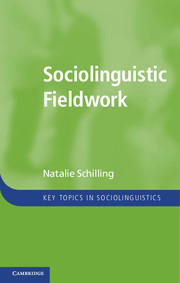5 - In the field: Finding contacts, finding a place
Published online by Cambridge University Press: 05 April 2013
Summary
We have seen in the preceding chapters that conducting a sound sociolinguistic study involves many stages of careful planning: defining your community of study (including what counts as a “community” in the first place); deciding how to sample and stratify the population; and designing data-collection instruments, whether sociolinguistic interviews, structured observations, surveys, experiments, or some combination of data-gathering tools. Further, since sociolinguistic studies generally require some level of ethnographic involvement, planning and conducting the study almost always involve going back and forth between pre-determined definitions and designs and new understandings about what and how to study, gleaned from ongoing participant-observation in the community of study.
Because the best sociolinguistic studies aim to situate their perspectives within the community rather than standing apart, most sociolinguists will introduce themselves into the community fairly early in the research process, most likely in the early phases of the project design. And while research design may seem daunting to the new sociolinguistic researcher, the most difficult step in any sociolinguistic study is almost certainly entering the community for the first time. However, as with other aspects of the research process, your entry into the community can be greatly facilitated with a bit of careful forethought, and with a mind open to the inevitable surprises that you will encounter in the field.
- Type
- Chapter
- Information
- Sociolinguistic Fieldwork , pp. 177 - 215Publisher: Cambridge University PressPrint publication year: 2013



